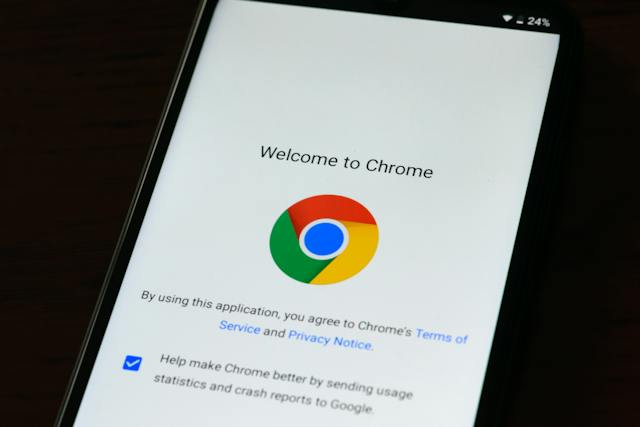Predicting the most influential factors for Search Engine Results Page (SERP) rankings in 2024 involves understanding ongoing trends and speculations in the field of Search Engine Optimization (SEO). However, it's important to remember that search engine algorithms, especially those of major players like Google, are constantly evolving. Here are some factors that are likely to remain or become highly significant in 2024:
-
Quality and Relevance of Content: Content that is informative, well-written, and directly addresses user intent is likely to continue to be a major ranking factor. This includes the use of relevant keywords, the depth of content, and its usefulness to the audience.
-
User Experience (UX): Search engines are increasingly focusing on the user experience. This includes website speed, mobile-friendliness, ease of navigation, and overall design. Websites that offer a smooth and engaging user experience are more likely to rank higher.
-
Page Load Speed: With the increasing importance of mobile searches, page load speed has become a critical ranking factor. Faster-loading pages provide a better user experience, which search engines prioritize.
-
Mobile Optimization: The trend towards mobile-first indexing means that the mobile version of your website will impact your rankings more than the desktop version. Ensuring your site is fully optimized for mobile users is essential.
-
Secure Websites (HTTPS): Website security is a priority for search engines. Secure Socket Layer (SSL) encryption (resulting in HTTPS websites) is likely to remain a standard requirement for higher ranking.
-
Quality Backlinks: The number and quality of backlinks to your website will continue to be a strong indicator of your site’s authority and credibility.
-
Artificial Intelligence and Machine Learning: As AI and machine learning become more sophisticated, they will play a larger role in how search engines understand and rank content. This could mean a more nuanced analysis of content quality and relevance.
-
Voice Search Optimization: With the rise of voice-activated devices, optimizing for voice search might become more important. This includes focusing on natural language and question-based queries.
-
Local SEO: For businesses serving local areas, local SEO strategies like optimizing for 'near me' searches and maintaining up-to-date local listings are likely to remain crucial.
-
E-A-T (Expertise, Authoritativeness, and Trustworthiness): Google's emphasis on the quality and reliability of information, especially in YMYL (Your Money or Your Life) topics, is likely to continue influencing rankings.
It's important to stay updated with the latest guidelines and announcements from search engines and to adapt your SEO strategies accordingly. Consulting SEO experts and reliable industry sources can also provide insights into emerging trends and changes.

How Should I Best Address Quality and Relevance of Content?
Top of Page
Addressing the quality and relevance of content for Search Engine Optimization (SEO) is crucial for improving your website's ranking on search engine results pages. Here are some strategies to ensure that your content is both high-quality and relevant:
-
Understand Your Audience: Before you create content, know who your audience is and what they are searching for. Use tools like Google Analytics, social media insights, and customer feedback to understand their interests, questions, and pain points.
-
Keyword Research: Identify the keywords and phrases that your target audience uses to search for your content. Tools like Google Keyword Planner, SEMrush, or Ahrefs can help in this process. However, avoid keyword stuffing; instead, use keywords naturally and contextually.
-
Create In-depth and Informative Content: Ensure your content thoroughly covers the topic. In-depth content that provides value to the reader is more likely to rank higher. Use authoritative sources, include statistics, and provide actionable insights.
-
Focus on User Intent: Align your content with the search intent of your audience. Whether they are looking for information, a specific product, or a service, your content should directly address their needs.
-
Regularly Update Content: Keeping your content up-to-date is essential. Update your pages with the latest information, statistics, and trends. This demonstrates to search engines that your site remains relevant and authoritative.
-
Use a Clear and Engaging Format: Break down your content into digestible sections using headings, subheadings, bullet points, and short paragraphs. This enhances readability and makes it easier for users (and search engines) to understand the structure of your content.
-
Incorporate Multimedia Elements: Use images, videos, infographics, and other multimedia elements to make your content more engaging and to provide additional value and context to your readers.
-
Optimize for Featured Snippets: Structure your content to answer specific questions concisely and clearly. This increases the chance of your content being featured in Google's featured snippets, which can significantly boost visibility.
-
Ensure Mobile-Friendliness: With the increasing number of users accessing content via mobile devices, ensure your content is easily navigable and readable on mobile screens.
-
Monitor Performance and Gather Feedback: Use tools like Google Search Console to monitor how your content is performing. Look at metrics like click-through rates, bounce rates, and time on page. Also, gather direct feedback from your audience through comments, surveys, or social media interactions.
-
Link Building: Internal and external links can enhance the authority and relevance of your content. Link to other relevant pages within your website and to authoritative external sources.
-
E-A-T Principles: Especially for YMYL (Your Money or Your Life) topics, focus on demonstrating expertise, authoritativeness, and trustworthiness. Cite credentials, include expert opinions, and provide factual, accurate information.
Remember, SEO is a long-term strategy. Consistency in creating high-quality, relevant content will gradually improve your search engine rankings and drive more organic traffic to your site.

What Factors Govern User Experience (UX) and I'ts Effect on SERP Rankings?
Top of Page
User Experience (UX) is increasingly recognized as a critical factor in Search Engine Results Page (SERP) rankings. Good UX not only helps in retaining visitors but also signals to search engines that your website is valuable and relevant to users' queries. Here are key factors of UX that can impact your SERP rankings:
-
Page Load Speed: A fast-loading website is essential for good UX. Search engines, particularly Google, prioritize sites that load quickly, as slow load times lead to a poor user experience and higher bounce rates.
-
Mobile Responsiveness: With the growing number of users accessing the internet via mobile devices, having a mobile-friendly website is essential. Google’s mobile-first indexing means the mobile version of your site is primarily used for indexing and ranking.
-
Ease of Navigation: A well-structured website with a clear menu, logical page hierarchy, and easy-to-find information leads to a better user experience. This includes having a clean design, clear calls-to-action (CTAs), and a straightforward path to finding important content.
-
Engaging and Relevant Content: Content that is engaging, relevant, and meets the user’s search intent improves the user experience. High-quality, informative content keeps users on the site longer, reducing bounce rates and improving dwell time.
-
Readability: Content should be easy to read and digest. This involves using an appropriate font size, sufficient contrast between text and background, and breaking up large blocks of text with headings, bullets, and images.
-
Interactive and Visual Elements: Adding interactive elements like videos, images, infographics, and sliders can enhance user engagement. However, these should be optimized to not adversely affect the site’s load speed.
-
Secure and Trustworthy Site: Ensuring that your website is secure (using HTTPS) and appears trustworthy impacts user experience. Sites with security issues or poor credibility can be penalized by search engines and deter users.
-
Minimal Pop-ups and Intrusive Ads: Overuse of pop-ups and intrusive ads can lead to a negative user experience, potentially increasing bounce rates and impacting your SERP rankings negatively.
-
Error Handling: A site with minimal broken links and error pages (like 404 errors) provides a smoother user experience. Regularly check and fix these issues to maintain the quality of your site.
-
Accessibility: Ensuring your website is accessible to all users, including those with disabilities, is not only good practice but can also impact your rankings. This includes using alt text for images, ensuring screen reader compatibility, and providing text transcripts for video and audio content.
-
Feedback Mechanisms: Providing ways for users to give feedback on your website can help you identify areas for improvement in UX.
-
Technical SEO: This includes optimizing site architecture, structured data, and other technical elements that help search engines crawl and index your site more effectively.
Search engines use a variety of signals to gauge user experience, such as click-through rates, time spent on site, bounce rates, and the rate at which users return to the search results after visiting a site. Continuously monitoring and optimizing these aspects of UX can significantly enhance your SERP rankings.

How Can I Optimise Page Load Speed?
Top of Page
Optimizing page load speed is crucial for both user experience and SEO. Here are some effective strategies to enhance your website's loading speed:
-
Compress and Optimize Images: Large images are often the main cause of slow page load times. Use image compression tools to reduce file size without losing quality. Also, consider using modern, efficient image formats like WebP.
-
Minimize HTTP Requests: Reduce the number of elements (like images, scripts, and CSS files) on your pages. More elements mean more HTTP requests, which can slow down your page load time.
-
Use a Content Delivery Network (CDN): CDNs store copies of your website on multiple servers around the world. This allows users to download your site’s data from the server closest to them, speeding up load time.
-
Enable Browser Caching: When you enable caching, visitors’ browsers can store copies of your site’s files, reducing the load time for repeat visitors.
-
Optimize CSS and JavaScript: Minify and combine your CSS and JavaScript files. This means reducing the file size by removing unnecessary characters (like spaces and line breaks) and combining multiple files into one.
-
Reduce Server Response Time: Look at the performance of your DNS (Domain Name System) provider and consider switching to a faster one if necessary. Also, optimize your web server's configuration and consider upgrading your hosting if it's underperforming.
-
Use Lazy Loading: Implement lazy loading for images and videos. This means they only load when they’re about to enter the viewport, rather than all at once when the page loads.
-
Optimize Web Fonts: If you’re using web fonts, limit the number of different fonts and font weights, and consider using font-display to control how and when they load.
-
Avoid Redirects: Each redirect creates additional HTTP requests, slowing down page load. Minimize them as much as possible.
-
Leverage AMP (Accelerated Mobile Pages): For mobile pages, consider using AMP, which is a project from Google and Twitter designed to make really fast mobile pages.
-
Evaluate and Optimize Third-party Scripts: Third-party scripts, like analytics, social media buttons, etc., can slow down your site. Evaluate their necessity and optimize their loading.
-
Use Asynchronous and Deferred Loading: Load JavaScript files asynchronously or defer their loading until after the main content of your page has loaded.
-
Regularly Perform Speed Tests: Use tools like Google PageSpeed Insights, GTmetrix, or Pingdom to regularly test your website’s speed and follow their optimization recommendations.
By implementing these strategies, you can significantly reduce your website's load time, improving user experience, and potentially boosting your SERP rankings. Remember, website optimization is an ongoing process, so regularly monitoring and updating your site for speed and performance is key.

How Can I Optimize My Site for Mobile Devices?
Top of Page
Optimizing your website for mobile devices is crucial given the growing prevalence of mobile internet users. Here are key strategies to ensure your site is mobile-friendly:
-
Responsive Web Design: Implement a responsive design that automatically adjusts the layout and content based on the screen size of the device. This eliminates the need for a separate mobile site and ensures a consistent user experience across devices.
-
Optimize Page Load Speed: Mobile users often have slower internet connections, so it’s essential to optimize your site’s load time. Compress images, minify code, leverage browser caching, and consider using a Content Delivery Network (CDN) to speed up loading times.
-
Simplify Navigation: Mobile screens are smaller and navigating them can be challenging. Simplify your site’s navigation to make it easy for mobile users to find what they're looking for. Use a hamburger menu for compact navigation and ensure links and buttons are easily clickable.
-
Touchscreen-Friendly Design: Ensure that all interactive elements like buttons, links, and form fields are large enough to be easily tapped with a finger. Avoid elements that require mouseover to reveal additional content, as this doesn't work on touchscreens.
-
Optimize for Local Search: Mobile users often perform local searches. Include location-based keywords in your SEO strategy and ensure your business is listed accurately on Google My Business and other relevant directories.
-
Test for Mobile Compatibility: Use tools like Google’s Mobile-Friendly Test to see how well your site performs on mobile devices and follow the recommendations provided.
-
Avoid Flash and Pop-ups: Flash isn’t supported on most mobile devices, and pop-ups can be annoying and challenging to close on a small screen. Use HTML5 instead of Flash, and minimize the use of pop-ups.
-
Use Large, Readable Fonts: Small text is hard to read on mobile devices. Use a font size that is easily readable without zooming and ensure there is enough contrast between the text and the background.
-
Optimize Media Content: Videos and images should be optimized to load quickly and display correctly on mobile devices. Use responsive images that adapt to different screen sizes and resolutions.
-
Keep Forms Simple: If your site requires users to fill out forms, keep them short and simple. Long forms can be tedious to fill out on mobile devices.
-
Accelerated Mobile Pages (AMP): Consider using Google's AMP for creating mobile-optimized content that loads instantly.
-
Monitor Mobile Performance: Regularly check your website’s performance on various mobile devices to ensure compatibility and a smooth user experience. Tools like Google Analytics can provide insights on mobile usage.
By focusing on these aspects, you can significantly improve the mobile user experience, which not only benefits your audience but also positively impacts your search engine rankings. Remember, with the increasing emphasis on mobile-first indexing by search engines, having a mobile-optimized website is more important than ever.

For SERP Ranking Should Catering for Mobile Devices be My Priority?
Top of Page
In the current digital landscape, prioritizing mobile optimization for SEO is indeed crucial. Here are several key reasons why focusing on mobile devices should be a high priority for your SEO strategy:
-
Mobile-First Indexing by Google: Google predominantly uses the mobile version of the content for indexing and ranking. This means that Google primarily considers the mobile version of your site for determining its search engine rankings.
-
Increasing Mobile Internet Usage: The number of users accessing the internet via mobile devices has been steadily increasing. More people now use their smartphones for searches compared to desktops. This shift in user behavior means that your site must cater to mobile users to capture this growing audience.
-
User Experience (UX): Mobile optimization is crucial for providing a good user experience. Sites that are not optimized for mobile can be difficult to navigate, leading to a higher bounce rate and lower time spent on the page, which are negative signals to search engines.
-
Local SEO: Mobile searches often have local intent. People use their mobile devices to find businesses and services near them. A mobile-optimized site is crucial for local SEO as it helps in attracting local customers.
-
Voice Search: With the rise of voice assistants on mobile devices, optimizing for voice search is becoming important. Mobile optimization plays a role in catering to this new search behavior.
-
Social Media Traffic: A significant portion of social media usage occurs on mobile devices. If your content is shared on social media, it's likely to be viewed on a mobile device. A mobile-friendly website ensures that this traffic has a positive experience.
-
Speed is a Ranking Factor: Mobile pages require fast loading times due to often slower mobile internet speeds. Google's Page Experience update includes loading speed as a ranking factor, making it crucial for mobile SEO.
-
Competitive Advantage: Having a mobile-optimized site can give you an edge over competitors who haven’t yet adapted to mobile-first indexing.
-
Conversion Rates: Mobile optimization can lead to better conversion rates. Users are more likely to engage with and purchase from a site that offers a seamless mobile experience.
Given these points, it's clear that mobile optimization is not just an optional add-on but a fundamental aspect of modern SEO. While you shouldn't entirely neglect your desktop site, ensuring that your site is fully optimized for mobile users is key to succeeding in today’s digital environment.

How Should I Ensure My Website is Secure with TLS?
Top of Page
Ensuring your website is secure with Transport Layer Security (TLS), previously known as Secure Sockets Layer (SSL), is essential for protecting your site’s communications and data, as well as for SEO and user trust. Here’s how you can implement TLS on your website:
-
Purchase an SSL/TLS Certificate:
- You can obtain an SSL/TLS certificate from a trusted Certificate Authority (CA). There are various types of certificates available, including domain-validated (DV), organization-validated (OV), and extended validation (EV) certificates. Choose one that suits your website’s needs.
- Alternatively, you can use free options like Let’s Encrypt, which provides DV certificates at no cost.
-
Install and Activate the Certificate on Your Hosting Server:
- The process for installing an SSL/TLS certificate varies depending on your hosting provider. Most hosting providers offer documentation or support to help you install the certificate.
- In some cases, web hosting providers offer easy, one-click SSL installation options.
-
Configure Your Site to Use HTTPS:
- Once the SSL/TLS certificate is installed, you need to configure your website to use HTTPS (rather than HTTP). This may involve updating your site’s settings in the content management system (CMS) or directly editing your site’s .htaccess file.
- Ensure all internal links, resources (like images, JavaScript, CSS files), and external links under your control use HTTPS.
-
Set Up HTTP to HTTPS Redirect:
- Implement 301 redirects to send visitors and search engines from the HTTP version of your site to the HTTPS version. This step is crucial for maintaining SEO rankings and ensuring users access the secure version of your site.
-
Update CDN and Third-Party Integrations:
- If you use a Content Delivery Network (CDN) or any third-party integrations, update them to use HTTPS to avoid mixed content issues, where some site elements are loaded over HTTP.
-
Fix Mixed Content Issues:
- Mixed content occurs when a secure webpage (loaded over HTTPS) includes resources (like images, videos, stylesheets, scripts) loaded over an insecure HTTP connection. Browsers may block these resources, so it’s important to ensure all content on your pages is loaded over HTTPS.
-
Update Sitemaps and SEO Settings:
- If you have sitemaps or utilize tools like Google Search Console, update them to reflect the HTTPS version of your site. Also, update any SEO tools and analytics to track the HTTPS version.
-
Monitor Your Site:
- After switching to HTTPS, monitor your website for any issues. Use tools like Google Search Console and your web analytics tool to keep an eye on traffic and performance and to identify any potential problems.
-
Renew Your SSL/TLS Certificate Regularly:
- SSL/TLS certificates have expiration dates. Set reminders to renew your certificates to avoid your website being flagged as insecure.
-
Consider Implementing HTTP Strict Transport Security (HSTS):
- HSTS is a response header that tells browsers to only connect to your website using HTTPS. It enhances security but should be used with caution, as incorrectly implementing it can make your site inaccessible to users.
- Implementing TLS is a straightforward process that significantly improves the security and credibility of your website. It's an essential step in protecting both your users and your site.

How Do Google Discern the Quality of Backlinks?
Top of Page
Google assesses the quality of backlinks using several criteria to ensure that they are genuine and valuable, reflecting the credibility and relevance of your website. Here's how Google discerns the quality of backlinks:
-
Relevance of the Linking Site: Google looks at how relevant the content of the linking site is to your site's content. A link from a site that has a similar focus or is in the same industry is considered more valuable than a link from a completely unrelated site.
-
Authority of the Linking Site: Backlinks from authoritative and trusted websites carry more weight. These include sites with a high PageRank, indicating that they are recognized and trusted sources in their field.
-
Context and Placement of the Link: The context in which your link appears on the page is important. Links embedded within the main content of a page are typically more powerful than those in footers or sidebars. Also, the surrounding content around the link can influence its value.
-
Anchor Text: The anchor text used for the link can impact its quality. If the anchor text is relevant to the content of your site and not overly keyword-rich or spammy, it can enhance the link's value.
-
Follow vs. NoFollow: "Follow" links pass on link equity (ranking power), while "NoFollow" links do not. Although NoFollow links do not contribute directly to your site’s ranking, they can still be beneficial for driving traffic and brand exposure.
-
Diversity of Linking Domains: Google values a diverse link profile. If a large number of backlinks come from different domains rather than the same few sources, it suggests a broader endorsement of your content.
-
Natural Link Growth Over Time: A natural, gradual increase in backlinks is seen as more credible than a sudden spike, which can often be indicative of spammy or artificial link-building practices.
-
User Behavior Signals: Google may use user behavior signals to assess the quality of a link. For instance, if users click on a backlink and then quickly return to the search results, it might indicate that the link wasn't useful or relevant.
-
Link Exchanges and Reciprocal Links: Excessive link exchanges or reciprocal linking can be seen as manipulative and may devalue links.
-
Paid Links: Google strongly discourages buying and selling links for the purpose of boosting PageRank and can penalize sites that engage in this practice.
-
Quality of the Linking Page: Apart from the overall authority of the site, the quality of the specific page where the link is located matters. A link from a high-quality, content-rich page is more valuable than one from a low-quality or thin content page.
-
Historical Link Data: Google looks at the historical data of links, such as how long they've existed and whether they've changed frequently, to assess their authenticity and reliability.
Understanding these factors can help in developing an effective backlink strategy that focuses on acquiring high-quality links rather than merely increasing the number of links. Remember, it’s about quality over quantity when it comes to backlinks.

Do Anchor Links Still Matter More?
Top of Page
Anchor text in backlinks still holds significant importance in SEO, but its impact and how it's interpreted by search engines like Google have evolved over the years. Here's an updated perspective on the role of anchor text in backlinks:
-
Relevance: Anchor text helps search engines understand the content and context of the linked page. Relevant, descriptive anchor text that accurately reflects the content of the target page is useful for both users and search engines.
-
Natural Link Profile: Search engines now prioritize natural link profiles. This means that having a diverse range of anchor texts, including branded, exact match, partial match, generic, and naked URLs, is seen as more organic and favorable. A profile with too many links containing exact match keyword anchor text can appear manipulative and may trigger search engine penalties.
-
Avoid Over-Optimization: In the past, exact match anchor text was heavily used to improve rankings for specific keywords. However, with updates like Google's Penguin algorithm, such practices can lead to penalties. It's important to avoid over-optimization and to ensure that your anchor text strategy appears natural and varied.
-
Anchor Text and Link Quality: The quality of the linking site matters significantly. A relevant anchor text from a high-authority, trustworthy site can have a much greater impact than the same text from a low-quality site.
-
User Experience: Anchor text should provide users with a clear idea of what to expect when they click a link. Misleading or vague anchor text can lead to a poor user experience, increasing bounce rates, which can negatively impact SEO.
-
Context Around Anchor Text: Google’s algorithms have become more sophisticated in understanding the context around anchor text. The content surrounding the link can also give clues about the relevance and quality of the link.
-
Internal Links: Anchor text is also important for internal linking. It helps in establishing site architecture and spreading link equity around websites. Proper use of anchor text in internal links can enhance the SEO performance of different pages on your site.
-
Brand and Safe Anchors: Using brand names and safe anchors like 'click here' or 'learn more' can be effective. They tend to appear more natural in a link profile and can reduce the risk of being flagged as manipulative.
-
Long-Tail Anchor Text: Occasionally using long-tail anchor text can be beneficial, especially for targeting specific long-tail keywords and enhancing the user's understanding of the link's content.
-
Semantic Variations: Using synonyms or variations of your main keywords as anchor text can help in ranking for those related terms and avoids over-optimization.
In summary, while anchor text remains an important element of SEO, the approach to using it effectively has become more nuanced. The focus should be on creating a natural-looking link profile with diverse and relevant anchor texts, avoiding practices that might appear manipulative to search engines. Prioritizing the user experience and the contextual relevance of the links is key.

How Can I Prepare for Artificial Intelligence and Machine Learning SEO When I'm Human?
Top of Page
Preparing for the evolving landscape of SEO influenced by artificial intelligence (AI) and machine learning (ML) is a smart move, even for those who are not directly involved in these technologies. Here are some strategies to help you adapt and stay ahead in an AI/ML-dominated SEO world:
-
Understand User Intent: AI and ML algorithms are increasingly focusing on understanding user intent behind searches. Ensure your content aligns closely with what your audience is looking for. This means going beyond keywords to addressing the questions and needs that drive those searches.
-
Focus on Quality Content: AI algorithms are getting better at identifying high-quality, relevant content. Ensure your content is well-researched, informative, and provides value to your readers. Avoid practices like keyword stuffing and focus on natural language and readability.
-
Stay Informed About AI and ML Trends: Keep yourself updated with the latest developments in AI and ML in the SEO industry. Follow reputable SEO blogs, attend webinars, and participate in industry forums.
-
Leverage Data Analytics: Use data analytics tools to understand your website's performance and user behavior. AI and ML can help process large sets of data to provide insights on how to optimize your website better.
-
Optimize for Voice Search: With the rise of AI-powered digital assistants, optimizing for voice search is becoming more important. Focus on conversational keywords and phrases, and structure your content to answer questions directly.
-
Improve User Experience (UX): AI algorithms can evaluate the UX of a website. Ensure your site is fast, mobile-friendly, easy to navigate, and provides a positive user experience.
-
Experiment with AI Tools: There are various AI tools available for SEO, such as those for keyword research, content creation, and data analysis. Experiment with these tools to see how they can improve your SEO strategy.
-
Enhance Personalization: AI enables more personalized experiences for users. Personalize your content and marketing strategies to better meet the needs and preferences of your target audience.
-
Focus on E-A-T (Expertise, Authoritativeness, Trustworthiness): Google's guidelines on E-A-T are increasingly relevant in an AI-dominated SEO world. Ensure your website and content reflect expertise, authoritativeness, and trustworthiness, especially in YMYL (Your Money or Your Life) topics.
-
Build a Diverse Backlink Profile: AI and ML algorithms can analyze the quality and relevance of backlinks more efficiently. Work on acquiring high-quality backlinks from diverse, authoritative sources.
-
Stay Ethical and Transparent: As AI becomes more sophisticated in detecting black-hat SEO tactics, it's crucial to adhere to ethical SEO practices. Avoid shortcuts and focus on strategies that offer genuine value to users.
-
Adapt to Changing Algorithms: Be prepared to quickly adapt your SEO strategies in response to changes in search engine algorithms, which are increasingly influenced by AI and ML.
-
Educate Yourself Continuously: The field of AI and ML is rapidly evolving, and staying educated is key. Consider taking courses or certifications in AI and ML fundamentals related to SEO.
By focusing on these areas, you can better prepare for the challenges and opportunities presented by AI and ML in SEO. Remember, the core principles of good SEO – relevance, quality content, and a great user experience – are likely to remain important, even as the tools and technologies evolve.

Those Sound Like Human Virtues
Top of Page
Indeed, the strategies for adapting to an SEO landscape increasingly influenced by artificial intelligence (AI) and machine learning (ML) do align closely with what we typically consider human virtues. This alignment highlights a key aspect of modern SEO: the convergence of technology and human-centric approaches. Let's explore why these "human virtues" are essential in an AI-driven SEO world:
-
Understanding User Intent: AI and ML are designed to mimic human understanding at a sophisticated level. By focusing on user intent, you're aligning your content with what AI algorithms are trying to decipher – the real questions and needs behind user searches.
-
Quality Content: The emphasis on high-quality, informative content reflects a fundamental human desire for valuable and trustworthy information. AI algorithms are being trained to recognize and prioritize content that best serves human users' needs.
-
Continuous Learning and Adaptation: The ability to learn and adapt is a deeply human trait. In an evolving digital landscape, staying informed and flexible mirrors the learning and adaptive capacities of advanced AI systems.
-
Emphasis on E-A-T (Expertise, Authoritativeness, Trustworthiness): These factors are fundamentally about human credibility. In an online world where misinformation can be prevalent, AI algorithms prioritize content created with genuine expertise and reliability, reflecting a human need for trustworthy information.
-
Enhanced Personalization: Personalization in content and marketing speaks to the human desire for individualized experiences. AI's ability to personalize is about catering to unique human preferences and behaviors.
-
Ethical and Transparent Practices: Ethical considerations in SEO, such as avoiding manipulative tactics, align with broader human values of honesty and integrity. As AI becomes more adept at identifying and penalizing unethical practices, these human virtues become even more crucial.
-
User Experience (UX): The focus on UX in SEO mirrors the human need for accessible, efficient, and pleasant interactions. A good UX design is about understanding and catering to human behavior and preferences.
-
Data-Driven Insights: While the ability to analyze large datasets is a strength of AI, the interpretation and application of these insights require human judgment and understanding. Making data-driven decisions in SEO involves a blend of AI capability and human insight.
In essence, while AI and ML bring technological sophistication to SEO, the core of effective SEO strategy remains deeply rooted in understanding and serving human needs and behaviors. The best SEO practices are those that seamlessly integrate technological capabilities with a profound understanding of human virtues and values.

How Can I Prepare for Voice Search Optimization?
Top of Page
Planning for voice search optimization is increasingly important as more people use voice assistants like Google Assistant, Siri, and Alexa for internet searches. Here’s how you can optimize your content for voice search:
-
Understand Conversational Queries: Voice searches are typically more conversational and longer than text-based searches. Focus on long-tail keywords and natural language that people might use in everyday conversation.
-
Use Question-Based Keywords: Many voice searches are in the form of questions. Identify common questions related to your business or content and include them in your content. Tools like Answer the Public can help you find popular question-based queries.
-
Optimize for Local Search: A significant portion of voice searches are local, such as “where is the nearest coffee shop?” Ensure your local SEO is strong. This includes having up-to-date listings on Google My Business and other local directories, and including location-specific keywords in your content.
-
Create Concise, Direct Answers: Voice search results often come in the form of direct answers. Structure your content to provide clear, concise answers to potential questions. This can also help your content become the featured snippet in Google search results, which is often used for voice search answers.
-
Focus on Page Load Speed: Ensure your website loads quickly, as this is crucial for voice search. Voice search devices often pull answers from the fastest-loading pages.
-
Implement Schema Markup: Using schema markup (structured data) helps search engines understand the context of your content. This can be particularly helpful in voice search, as it aids in providing precise answers to specific queries.
-
Optimize for Mobile: Most voice searches are performed on mobile devices. Ensure your website is mobile-friendly with responsive design and fast loading times.
-
Use Natural Language in Content: Write your content in a conversational tone. This aligns with the more natural, spoken queries of voice search.
-
Build FAQ Pages: Frequently Asked Questions (FAQ) pages are great for voice search optimization. They naturally incorporate conversational questions and answers, which align well with voice search queries.
-
Understand User Intent: Determine what users are likely looking for when they perform a voice search related to your content or industry. Tailor your content to meet these needs and provide value.
-
Monitor Your Performance: Use analytics to track how users are finding your website and what queries they're using. This can provide insights into how to further optimize for voice search.
-
Stay Informed About Voice Search Trends: The technology and trends in voice search are constantly evolving. Keep up with the latest developments in voice search technology and adjust your strategies accordingly.
By implementing these strategies, you can better position your website to benefit from the growing use of voice search and ensure that your content is accessible and relevant in this evolving digital landscape.

How Do I Optimize for Local SEO?
Top of Page
Optimizing for local SEO is crucial for businesses that operate in specific geographic areas. It helps your business appear in local search results, which are often highly relevant to user queries. Here are key strategies to optimize your website for local SEO:
-
Google My Business (GMB) Optimization:
- Claim and verify your Google My Business listing.
- Ensure that your NAP (Name, Address, Phone Number) information is accurate and consistent across the web.
- Add a detailed business description, categories, business hours, types of services or products offered, and plenty of high-quality photos.
- Regularly update your GMB profile with posts, offers, and events.
-
Local Keywords:
- Incorporate local keywords into your website content. These should be relevant to your business and region.
- Include city or region names, local landmarks, and neighborhood terms in your metadata, headers, and content.
-
On-Page SEO:
- Make sure that each page of your website is optimized for local SEO, including title tags, meta descriptions, and content.
- Embed a Google Map on your contact page showing your location.
-
Mobile Optimization:
- Ensure your website is mobile-friendly, as a significant portion of local searches are performed on mobile devices.
-
Local Link Building:
- Get backlinks from local news websites, community portals, and other relevant local sources.
- Participate in local events and sponsorships which can yield local media coverage and backlinks.
-
Online Reviews:
- Encourage customers to leave reviews on your Google My Business listing and other relevant review sites.
- Respond professionally to all reviews, both positive and negative.
-
Schema Markup:
- Use local business schema markup on your website to provide search engines with detailed information about your business, like your business type, operating hours, and location.
-
Local Content Creation:
- Create content that is relevant to your local audience. This could be blogs about local events, news, activities, or guides.
- Utilize local social media groups and forums to understand local interests and concerns.
-
Consistent NAP Citations:
- Ensure your NAP information is consistently listed across all online directories and platforms.
- Regularly check and update your listings.
-
Use of Social Media:
- Actively use social media to engage with your local community.
- Share local news, events, and updates related to your business.
-
Voice Search Optimization:
- Optimize for voice search, as many voice searches are local. This includes using conversational language and including local phrases.
-
Monitor Your Performance:
- Use tools like Google Analytics and Google Search Console to monitor your website’s performance and understand how users are finding your website.
Local SEO is an ongoing process, not a one-time setup. Continuously updating your content, engaging with your local community, and staying on top of local SEO best practices are essential for maintaining and improving your local search presence.

What Can We Conclude About Climbing the SERPs in 2024?
Top of Page
Climbing the Search Engine Results Pages (SERPs) in 2024, based on current trends and the evolution of search engine algorithms, involves a multifaceted and user-centric approach. Here are some key conclusions and strategies for success in SEO for 2024:
-
User Experience (UX) is Paramount: A great UX is crucial. Websites need to be fast, mobile-friendly, easy to navigate, and provide a positive user experience. User engagement metrics like dwell time, bounce rate, and click-through rate are increasingly important.
-
Quality and Relevance of Content: Content remains king in SEO. Focus on creating high-quality, informative, and relevant content that addresses the needs and questions of your target audience. E-A-T (Expertise, Authoritativeness, Trustworthiness) is particularly crucial for YMYL (Your Money or Your Life) content.
-
Voice Search and Conversational AI: As voice search grows, optimizing for conversational queries and natural language will become more important. This includes focusing on long-tail keywords and question-based content.
-
Mobile Optimization: With mobile-first indexing, ensuring your website is optimized for mobile users is not just beneficial but essential. This includes fast loading times, responsive design, and mobile-friendly navigation.
-
Local SEO: For businesses serving local communities, local SEO will continue to be vital. This involves optimizing Google My Business listings, local citations, and content tailored to local audiences.
-
Artificial Intelligence and Machine Learning: Embrace the growing influence of AI and ML in search algorithms. Staying informed about AI trends in SEO and using AI-powered tools for data analysis and decision-making can provide a competitive edge.
-
Video Content: Video content is becoming more prominent in search results. Incorporating video into your content strategy and optimizing video content for search can enhance visibility and engagement.
-
Backlink Quality Over Quantity: The focus on the quality and relevance of backlinks rather than sheer quantity remains vital. Natural link-building strategies and earning backlinks from authoritative sources are key.
-
Technical SEO and Site Health: Regular audits for site health, including fixing broken links, optimizing site structure, and improving site speed, are essential.
-
Structured Data and Schema Markup: Using structured data helps search engines understand the context of your content, which can improve visibility in SERPs.
-
Adaptability and Continuous Learning: SEO is an ever-evolving field. Staying adaptable, continuously learning, and being willing to adjust strategies in response to algorithm updates and industry changes are crucial.
-
Ethical Practices and Transparency: Adhering to ethical SEO practices and maintaining transparency with your audience will continue to be important, especially as search engines become more adept at identifying and penalizing manipulative tactics.
In conclusion, climbing the SERPs in 2024 is about aligning with user needs and preferences, focusing on the quality and relevance of content, leveraging the latest technologies, and maintaining ethical SEO practices. A holistic approach that balances technical optimization, content quality, user experience, and understanding of emerging trends will be the most effective strategy for success in SEO.